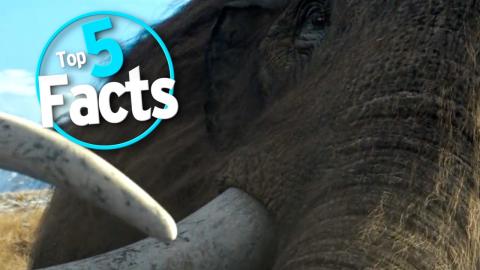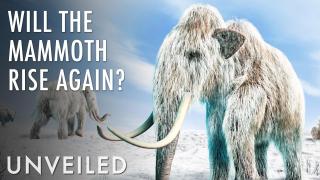Top 5 Facts about Mammoths

Today's show is bigger, bolder, and way woollier that the average! Welcome to our Top 5 Facts and in this instalment we're counting down the five most fascinating things that you probably didn't know about Mammoths!
Special thanks to our user christo for submitting the idea on our Interactive Suggestion Tool at http://www.WatchMojo.comsuggest!
#5: Mini Mammoths Were a Real Thing
FRANK OCEAN! - Mini Fantastic Facts
Mammoth’s are so well known for being huge, their very species name has evolved into an adjective to describe anything that’s very big. But a mammoth misconception about mammoths is that they were all massive. They weren’t. Male woollies were up to 3.5m tall and weighed approximately six tonnes – which is about the same size as today’s elephants. There was the Imperial Mammoth which weighed over ten tonnes, and the Songhua River Mammoth which sometimes topped 15 tonnes. But for all the bigger breeds, there were some tiny types as well. The Cretan Dwarf Mammoth is the smallest that ever existed, standing only around 1m tall and weighing roughly 300kg or 660 pounds. Do you think the mini mammoth was fond of jumbo shrimp?
#4: Mammoth Meat was Edible in the 1800s
Are Scientists About to Clone a Mammoth? | Unveiled
According to a report carried in an 1872 edition of the New York Times, a French expedition to the North Pole was partly fuelled by finding, cooking and eating mammoth. The report describes how ‘frozen mammoths were found’, that, ‘having been dead only a few thousand years’, they were ‘nicely preserved’, and that they were soon ‘broiled, roasted and baked’. The overall tone of the article leaves at least a small question mark over the claim however, as it also describes the undoubtedly perilous adventure as ‘pleasant and easy’. Russian zoologist Alexei Tikhonov said he once tried a bit of the meat, and said it was just what you’d expect– disgusting, with the distinct taste of something left in the freezer too long.
#3: The Many Uses of Mammoth Tusk
Top 20 Facts About Infamous Gangs
It’s common knowledge that one can determine the age of a tree by counting the rings in its trunk. But it’s less common knowledge that similar information can be taken from a mammoth tusk. Mammoth ivory records major lines for each year of a mammoth’s life, and finer lines for months and weeks. Experts can decipher which season a mammoth died in by studying the marks, and work out the creature’s general health. Of course, not all tusks are available for modern-day inspection, as many were used to manufacture tools in ancient civilisations. Indeed, the earliest known musical instruments were made out of mammoth ivory – a flute over 40,000 years old was found in Southern Germany, in 2012.
#2: Trade in Mammoth Ivory is Legal and Lucrative
Top 10 Powers Superhero Fans Would Trade Their Soul For
The international trade of elephant ivory is illegal, but mammoth tusks are allowed onto the world market, with both the supply and demand increasing year by year. As the world’s coldest spots continue to thaw through global warming, the discovery of well-preserved mammoth carcasses is becoming a reasonably regular occurrence. And usually, the tusks are the best kept bit. Estimates say as much as 60 tonnes of Siberian mammoth tusk is being exported out of Russia every year, and nearly all of it goes to China. Top grade ivory is worth around $400 per pound, and a typical Woolly Mammoth tusk weighs around 100lb. That’s $40,000 before you’ve even started on the second tusk!
#1: The Mammoth Will Rise Again
Rise (2018) - Top 5 Facts You Need to Know!
Probably the most significant aspect of finding well-preserved carcasses across the Arctic tundra, is the hope that the discoveries will inspire de-extinction of the species. According to National Geographic, the ‘revival of a mammoth… Is no longer mere fantasy’. Scientists are working to replicate DNA by drawing cell nuclei from the ‘mummified’ mammoths and combining it with the genetic information of Asian elephants – which are considered biologically closer to the mammoth than their African counterparts. The cells would then be transferred into an elephant womb, and we’d wait for scientifically-induced nature to take its course. A so-called ‘cold resistant elephant’ is expected before the genuine article, but it isn’t unrealistic to expect real-life woollies to roam the coldest regions of Earth within the next century. So, how about you? Would you eat an ancient frozen mammoth steak? For more legal and lucrative Top 10s and jumbo shrimp Top 5s, be sure to subscribe to WatchMojo.com!






